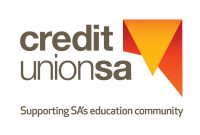
Covid 19: Principals begin to reflect
The Digital Divide revisted
21st May 2020
This is the first in a series of posts that examines the impact of the current pandemic on schools and education.
Obviously, the impact of Cover-19 over the past few months has been profound. The impact has been local, national and international; and, of course, it is continuing to unfold, with both the future of the pandemic and its broad implications for schools still unclear.
Even though the pandemic is still very much with us, SASPA is keen to begin to identify what needs to be learned from the crisis we have faced. With this in mind, principals have begun the process of reflecting on how schools have responded and how effective they have been in maintaining schools and education in such a challenging environment.
Clearly, there are significant lessons to be learned and there are also significant achievements to be acknowledged. Doubtless, initial responses from all involved will tend to the immediate, raw and direct, with more tempered assessments to follow. However it is important to start the process.
Also, it is important to acknowledge that even in a nation such as Australia, where there has been a coordinated and widely-supported national response, there have been significant differences in the actual experience of the pandemic and the related practices and protocols applied. Indeed, specifically in relation to schooling, there have been marked variations in practice across the nation. In fact, the question of whether schools should remain open has proved to be one of the most contentious issues of national debate. Schools, particularly state schools, emerged as a critical chess piece in the politics of the time. On this particular point, the experience in South Australia has been markedly different from that in other jurisdictions, both nationally and overseas. Therefore it is important that if we want to assess the true impact of the pandemic on schools and education we also need to have a regard for what happened beyond South Australia.
This initial post attempts to put the pandemic and its impact on schools and education in the broader national and international perspectives. This particular post looks at the issue of the ‘digital divide’ in a context broader than just Australia.
The transition to home-based schooling immediately focused attention on the issue of ‘the digital divide’. The term, used to describe those denied access to IT, originated in the 1990s. At the time, it focused attention not just on those families without the financial resources to take advantage of the new digital technology that was emerging in all facets of life but also on the schools not able to provide the desired level of access to the same technology.
Over the next 20-30 years, the overall level of IT facilities, services and access to individual devices for all students, and the widespread incorporation of digital technology in all aspects of teaching and learning strengthened across all schools. The digital divide between schools became less. However, the pandemic has again refocused attention on the individual student’s home and the often parlous state of IT resources available there to support the kind of digital learning we now take for granted. This refocused attention was apparent not just in Australia but overseas as well.
Following the outbreak in China, Italy was the first country to experience a sudden, widespread lockdown and the cessation of formal schooling. The following account in late April from The Guardian (Tobias Jones, 24/4/20) appeared under the headline: Italian lessons: what we’ve learned from two months of home schooling. The article claimed that Italy was poorly prepared for the shift to home schooling, with the problems extending well beyond the suddenness of the closure. The article claimed that Italian schools are under-resourced compared to the rest of Europe. It also claimed that the overall quality of teaching is also comparably poor and that there is minimal teacher training. There is also a major problem with the age profile of teachers. According to the article, the combination of these problems meant that Italian schools were definitely not ready for any transition to home schooling. Schooling was decidedly ‘analogue’,
… Italian education is, at its worst, particularly conservative and condescending: the pupil is seen as an empty vessel to be filled with knowledge that is regurgitated in exams.
Because of that lack of money, and because, according to the OECD, Italy has the oldest teachers in the world – 59% are over 50 – Italian schools are heavily analogue. Kids carry a dozen books to and from school every day in massive backpacks, like Obelix and his rock, which did not seem like a promising basis for remote learning.
Obviously, for Italian schools the challenge posed by the transition from ‘analogue’ to ‘digital’ was always going to be one of epic proportions but it was compounded even more when problems associated with the digital divide was added to the mix:
The closing of all Italy’s schools meant teachers found themselves having to invent a new kind of classroom from scratch. There were no ministerial guidelines or approved websites. …
At the beginning, it was chaotic. There was little coordination between different teachers within the same schools, let alone across different schools, and parents reported finding themselves boggled by a vast array of IT platforms: Meet, Classroom, Zoom, Jitsi, Edmodo. The problem wasn’t only that sites and servers crashed as the country’s almost 8 million students all logged on. Many kids couldn’t connect at all.
The Digital Economy and Society Index rates Italy 24 out of 28 European countries in its “digitalisation index”, and last year Italy’s national statistics agency, Istat, reported that 23.9% of Italian families have no access to the internet. As one teacher said to me: “We’ve discovered how democratic pencil-and-paper is.” The attempt by many teachers to get less-privileged students the necessary laptops and internet connections is one of the untold stories of this crisis. By 19 March, the ministry of education claimed to have distributed 46,152 tablets throughout the country. Since then, an emergency budget has created a €70m fund for providing computers to those without. Even if the necessary hardware is distributed, one special educational needs teacher told me that online classes just don’t work for children who need bespoke lessons: “Those who are already doing well at school are now doing even better, but those who were struggling are just falling further behind.”
The Italian experience no doubt highlighted just how urgently the system had to adjust to a new reality. Doubtless Italian teachers felt pride in the way they were able to adjust so quickly to the new reality and, presumably, they attracted considerable good will from the community for their efforts. But there are other critically important points involved here because the overall achievements were problematic.
For all the success under intense pressure, the overall educational outcome was highly compromised. Many students missed out. Their relative disadvantage was compounded once they were effectively removed from the environment of the physical school. The efforts to support disadvantaged students with devices and internet connection were, as we will see, repeated everywhere. However, arguably the most profound observation came from the teacher who made the point – We’ve discovered how democratic pencil-and-paper is.” By extension, the local school is also a profoundly democratic institution. Perhaps it has been taken for granted and that it has taken the pandemic to demonstrate just how important it is in providing the fundamental reality of an educational ‘level playing field’. It was only when the school was literally ‘put on line’ that we began to see more clearly what an incredible institution it is. We will look at this as this paradoxical situation later but for the present while we celebrate the successes associated with the sudden transition to digital schooling and we look forward to a more digitally enabled education in the future, we also need to recognise that the real, local, neighbourhood – or however we describe it – state school has evolved as the critical component of society’s commitment to any notion of educational equity; and it remains the most effective means to overcome or limit educational disadvantage.
As noted, the effect of the digital divide was evident everywhere. Moreover, it applied to far more than just education. The following article from Deutsche Welle (DW) appeared under the title Coronavirus underscores urgency to bridge digital divide (Ashutosh Pandey, 9/4/20). As well as identifying differences both within and between countries, the article sketches impacts of the digital divide beyond the world of schooling. Perversely, there is even a suggestion that the pandemic will accelerate the growth and impact of the digital divide:
The world is witnessing one of the swiftest organizational transformations in history as governments and businesses rely heavily on the internet to minimize the disruption caused by lockdowns and other sweeping measures to contain the coronavirus.
The past few weeks have seen an unprecedented adoption of digital technologies with people being asked to work from home, schools and universities taking their classes online, doctors and patients turning to telemedicine and political leaders attending virtual summits.
Digital tools such as apps and smartphone data are also being used to check the spread of the virus, while tech companies, including Alibaba and Tencent in China and IBM, Google and Microsoft in the US, are deploying their high-performance computer capabilities to help researchers collaborate as they look for a cure for the disease.
But, this increasing reliance on digital platforms has exposed the deep divide between the technology haves and have-nots both within countries and between countries, Torbjörn Fredriksson, the digital economy head at the United Nations Conference of Trade and Development (UNCTAD), told DW.
He cites the example of the elderly people even in the most advanced countries, who are most vulnerable to the disease but may not be digitally well-equipped to access all the real-time information being disseminated online to respond to the COVID-19 outbreak.
Looking across countries, it’s evident that many of the digital tools being deployed in the developed world to deal with the pandemic such as online conferencing tools, virtual classrooms and online shopping may not be easily applicable in most developing and least developed countries, which have limited access to the web, making them especially vulnerable once the crisis hits them head-on.
“Once companies, organizations and governments shift more and more to digital solutions to cope with social distancing, travel bans and other lockdown effects, they will learn to use digital technologies in new ways that they were not used to before,” Fredriksson said. “So, once the economy picks up again, we will see a more digital economy and a more digital society in countries that have been able to take advantage of the digital tools, but the countries that are not so ready to do that right now will fall further behind as a result.”
Deep digital chasm
Just one in five people use the internet in the least developed countries even as more than half of the world’s population is connected to the web, UNCTAD data shows. In the poorest countries, less than 5% of the population shops online compared with 60-80% in advanced nations. A vast majority of online shoppers in these countries choose to pay in cash upon delivery as opposed to paying digitally upfront.
Poor access to internet and other digital platforms makes it almost impossible for the poorest countries to harness the potential of digitalization in the manner their more developed peers are doing during the crisis.
The US media has devoted considerable attention to the impact of the Covid-19 pandemic on its schools. There has been considerable attention in major US papers such as The New York Times and The Washington Post. Again, the issue of the digital divide has been highlighted. An article – Teachers, parents and principals tell their stories about remote learning – in The Washington Post (Valerie Strauss, 27/4/20) highlighted the basic problem:
One of the greatest challenges for schools in implementing distance learning is providing access to both devices and connectivity.
The issue of connectivity is obviously crucial. One teacher’s comments are instructive:
“Some of my students wait for their mother to come home so that they can access her phone to do the work.
In terms of connectivity, the article noted that schools were also distributing ‘hot spots’ in addition to the devices, which commonly appear to be Chromebooks. Schools were also distributing … paper learning packets, which school principals copy and distribute at both food-distribution centers and schools, trying to leave no child without instruction.
In general, the problems with access to technology appeared to be worse at the primary level of schooling and, not surprisingly, the challenge was greatest in disadvantaged communities. The article referred to a major survey undertaken by the Network for Public Education – Emergency Remote learning Survey Results – in an attempt to understand the impact of home schooling. The survey suggested that over 50% of schools surveyed had had to provide some form of ‘device distribution’ to fill the ‘technology gap’.
As an aside, the same survey offered some immediate indication of how difficult the transition to home schooling had been for both parents and teachers. The numbers surveyed were limited – approx 7,000 teachers and 5,000 parents, all from the public sector – but the initial responses from both groups to home schooling appear highly qualified:
Only 19 percent of teachers reported having completely adjusted; over 50 percent said their adjustment was difficult, and nearly 31 percent were, at the time of their response to the survey, still struggling to adjust. While 41 percent of parents reported that their child had adjusted and was able to complete assignments, 22 percent reported that their child was still struggling to adjust.
An article in The New York Times (Noam Scheiber, Nelson D Schwartz & Tiffany Hsu, 27/3/20) – ‘White-Collar Quarantine’ Over Virus Spotlights Class Divide, Child care options, internet access and extra living space leave a gulf between rich and poor in coping with disruptions to school and work. – identified what it saw as one of the long-held myths of the new, digital technology:
Long before the new coronavirus, another kind of equalizer was being promoted: the internet. For decades, tech evangelists cited the democratizing power of the World Wide Web, which they said would bring high-quality services to strata of society that had previously gone without them.
The article pointed out the promised future relied on technology that … remains out of reach for many Americans. While data on internet access is inexact, the most recent Federal Communications Commission figures, from 2017, showed that 30 percent of households did not have even a slow broadband connection.
The reality was that … millions of Americans had only phones, often with strict caps on data usage. “Imagine using a mobile device to look up your class work, type out a paper,” she said. “No parent would choose that as the primary tool for their child’s learning.”
Other articles have also focused on the negative impacts associated with home schooling across the US. Commonly, the forced closure of schools and the transition to on-line schooling is presented not as a seamless shift to a digitally-richer learning and teaching environment but as an ‘educational catastrophe’. This article is from The Washington Post (Laura Meckler, Valerie Strauss & Joe Heim, 13/4/20:
Millions of public school students will suffer from school closures, education leaders have concluded
‘An educational catastrophe’
Just a month ago, most American children were attending school as normal. Today, virtually every U.S. school building is closed. Seventeen states have ordered campuses shuttered through this academic year, another three recommend it, and educators and parents across the country are bracing for a lost spring — and maybe more.
Dr. Anthony S. Fauci, director of the National Institute of Allergy and Infectious Diseases, said last week that he expects schools can reopen in the fall. But he can’t be sure, he said.
Whenever schools return, researchers say, the likely result is a generation of students forced to play catch-up, perhaps for years to come. Most vulnerable are those who are always the most vulnerable: homeless children, those living in deep poverty and students with disabilities. While some students are adapting to distance learning, others are struggling to find quiet spaces to study, lack reliable Internet access or must care for younger siblings during the day, among other barriers.
“This may be the biggest challenge public education has had to face in the four-plus decades I’ve been doing this work,” said Michael Casserly, executive director of the Council of the Great City Schools, a nonprofit coalition of 76 of the nation’s largest urban public school systems. He said that online learning is probably failing many low-income families and that without “substantial” new spending, schools won’t have the money to reverse the damage. “We are facing an educational catastrophe.”
And this is from The New York Times (Dana Goldstein, Adam Popescu & Nikole Hannah-Jones 6/4/20):
As School Moves Online, Many Students Stay Logged Out
Teachers at some schools across the country report that fewer than half of their students are participating in online learning
Chronic absenteeism is a problem in American education during the best of times, but now, with the vast majority of the nation’s school buildings closed and lessons being conducted remotely, more students than ever are missing class — not logging on, not checking in or not completing assignments.
The absence rate appears particularly high in schools with many low-income students, whose access to home computers and internet connections can be spotty. Some teachers report that fewer than half of their students are regularly participating.
The trend is leading to widespread concern among educators, with talk of a potential need for summer sessions, an early start in the fall, or perhaps having some or even all students repeat a grade once Americans are able to return to classrooms.
Students are struggling to connect in districts large and small. Los Angeles said last week that about a third of its high school students were not logging in for classes. And there are daunting challenges for rural communities like Minford, Ohio, where many students live in remote wooded areas unserved by internet providers.
Educators say that some students and their parents have dropped out of touch with schools completely — unavailable by phone, email or any other form of communication — as families struggle with the broader economic and health effects of the coronavirus outbreak.
Even before the outbreak, chronic absenteeism was a problem in many schools, especially those with a lot of low-income students. Many obstacles can prevent children who live in poverty from making it to class: a parent’s broken-down car or a teenager’s need to babysit siblings, for example. But online learning presents new obstacles, particularly with uneven levels of technology and adult supervision.
Cratering attendance in some districts contrasts with reports from several selective or affluent schools where close to 100 percent of students are participating in online learning. The dramatic split promises to further deepen the typical academic achievement gaps between poor, middle-class and wealthy students.
The clear suggestion in such articles is that while the digital divide is an issue in its own right – lack of both devices and connectivity means that many students simply cannot access the on-line education provided – it is only part of the wider and more entrenched problem that covers disengagement from and non-participation in conventional schooling. For disadvantaged communities, the pressures that typically compromise students’ participation in and success with conventional schooling become ever more acute with home schooling. Importantly, while schools can work on limiting the negative impacts of the digital divide by providing access to both devices and connectivity, there are other factors that will inevitably compromise the education that students from disadvantaged communities will experience in the home schooling situation.
Importantly, the investigation of the compounding negative impact of home schooling on disadvantaged communities needs to look well beyond the single issue of the digital divide.
Much closer to home, there had been an understanding at the national level of the relevance of the digital divide. The following comes from The Conversation (Amy Graham & Pasi Sahlberg, 26/3/20):
Schools are moving online, but not all children start out digitally equal
For some children, learning online will be little more than an inconvenience. For others however, this will further magnify their learning disadvantage.
About 87% of Australians can access the internet at home. But only 68% of Australian children aged 5 to 14 living in disadvantaged communities have internet access at home, compared to 91% of students living in advantaged communities.
Students who have unlimited broadband internet at home might do just fine in this new situation. But students living remotely whose internet is intermittent and not fast or reliable enough to cope with online learning, and those in large families sharing limited digital devices, may get left behind.
The first findings from our as yet unpublished 2019 data confirm teachers and principals see family poverty as a key factor in accessing technology that students need for learning. More than 80% of teachers thought students’ socio-economic circumstances impact on their access to technology needed for learning. And one-third of teachers directly observed that children living in poverty had less access to technology than their more well-resourced peers.
This situation is likely to get far worse as the digital learning environment becomes the main option for schooling. Ideally, we would have addressed the existing digital divide before thrusting all students into it.
And this is from Eureka Street (Nicola Heath, 27/3/20):
Digital divide made even wider in COVID-19 times
As a freelance journalist, I’ve worked from home for years. While sometimes I complain about our Internet speed, I’ve successfully interviewed people from all over the world from my dining room table. Now, thanks to COVID-19, life has taken an unexpected turn, and I find myself attempting to home-school my seven-year-old daughter. Yesterday, she did her weekly music lesson via Zoom. This morning, I downloaded a lesson plan provided by her teacher, which includes a link to a workout uploaded to YouTube by an energetic PE teacher in the UK. Later, she’ll do an art lesson on Instagram and learn French via an iPad app.
So far, so good — but, of course, all of the above relies on access to a laptop or tablet and the internet, luxuries not universally available to Australian students. In 2016-17, 1.25 million Australian households lacked the home internet connection that’s required to make full use of online learning platforms like Class Dojo, where my daughter’s class is congregating during the coronavirus lockdown.
According to the Australian Digital Inclusion Index (ADII), digital inclusion — whether a person can access, afford and have the digital ability to connect and use online technologies effectively — is influenced by differences in income, age, education levels, employment and geography. Digital exclusion often goes hand in hand with other forms of social disadvantage. Indigenous Australians, people who have a disability, have low incomes, or live in rural and remote locations are among the most digitally excluded groups in the country. ‘In general,’ notes the report, ‘Australians with low levels of income, education, and employment are significantly less digitally included,’ which creates ‘a substantial digital divide between richer and poorer Australians.’
Tellingly, it was private schools that led the way in sending students home to learn online, perhaps safe in the knowledge that their students’ affluent households would have ready access to the internet. In the public system, where students are more likely to have parents who earn below-average incomes or who have had a limited education, that’s not a reliable assumption to make. If we close schools completely, what happens to those students who don’t have digital access? Or, for that matter, to those students for whom school is a refuge from a dangerous or unstable home?
And at our own local level we know that principals in SA high schools, aware of the risks associated with the equivalent digital divide in their own communities, went to great lengths to ensure at the end of Term 1, as the system prepared for the shift to remote schooling, that students had access to both devices and connectivity. There was also a focus on hard copy materials that could be collected from the school. The fundamental equity issues were ones of which schools serving disadvantaged communities were well aware. As a range of SA high school principals noted at the time:
- I think that, in this challenging time, disadvantage comes to the forefront and that despite our extensive efforts, we are at risk of significant learning disconnection, isolation and well-being issues with our already marginalised cohorts.
- My worry is for our most vulnerable students, and in a population like [ours] (as in many others similar) where our recent survey indicated 25-30% of students don’t have a device and/or internet connection in the home, the risks for continuity of learning are increased. Coupled with indications of low numbers expected on site in term 2, the worry magnifies.
- We are also facing issues re: access to devices and internet at home for some of our students. Currently we have 57 students requiring device and/or internet access support. We are working on ways to provide this, however, we are also preparing some hard copy packs. Equity of access is a big issue.
- I am also concerned about the lack of access for a significant number of our families and so we are forced into the combination of digital and ‘old school’ strategies in a similar way to you – Daymap, email, FB, SMS, flashdrives, hard copy packs posted home and individual home deliveries (and picks ups) in some cases. It requires a huge collaborative workload of which my staff have overwhelmingly risen to the occasion. We do not have the $ capacity to provide laptops for all of those in need.
At one level, the idea of the ‘digital divide’ is a helpful construction. It highlights the way a significant cohort of students are penalised educationally because their families lack access to the devices and connectivity that are essential for participation in on-line learning. This form of educational disadvantage has certainly been highlighted in the current Covid-19 pandemic and its impact has been evident on a world-wide basis. There are endless examples of how schools have attempted to limit the effects of this form of disadvantage.
At the same time, as future posts will argue there is far more to educational disadvantage than the digital divide and what happens with home schooling is that, literally overnight, there can be a concentration of the many facets of educational disadvantage.
While the actual experience of remote or home schooling was limited in SA we still need to be cognisant of its impact in other jurisdictions, both nationally and internationally. Principally, this is because the reality of home schooling forces us to recognise the critical concept of ‘education capital’ or the significant benefits or handicaps that students can bring to their learning by virtue of their family or socio-economic status. Education capital is generally directly related to the family’s financial capital, but it is not a perfect relationship.
Many families, with high levels of education capital, were able to adjust to home schooling with relative ease or, expressed differently, they were able to minimise its impact on their children’s education. However for many other families, with limited education capital, home schooling was a significant impediment to their children’s education.
Viewed from a different perspective, home schooling proved the essential worth of mainstream schooling as the fundamental weapon we have to counter educational disadvantage.
The critical point is that whilst with the impact of Covid-19 we can point to the incredible success schools had in making the transition to home schooling with virtually no warning and limited resources, the same experience has shown that to reduce the impact of educational disadvantage we need to refocus and renew our commitment to the primacy of the conventional, mainstream school.


















